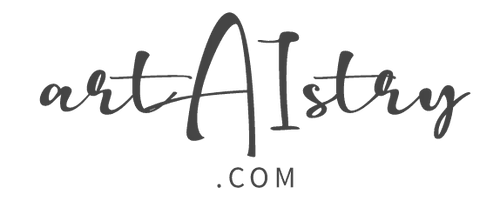Retrofuturism is a movement in the arts, music, fashion, and popular culture that combines elements of the past with elements of the future. It is often characterized by a nostalgic view of the future, with an emphasis on technology and science fiction.
The term "retrofuturism" was first coined by American writer Mark Dery in his 1991 essay "Black to the Future," in which he explored the ways in which African Americans were using science fiction and fantasy to reimagine the future. Retrofuturism has since been used to describe a wide range of cultural products, from fashion to architecture to film. To see more examples, explore our Retrofuturism wall art.
Retrofuturism in Art
Retrofuturism is often used in art to explore the ways in which the future can be imagined. Artists often use retrofuturistic images to comment on the present, to critique the future, or to simply create a visually arresting image. One of the most famous examples of retrofuturism in art is the painting "A Sunday Afternoon on the Island of La Grande Jatte" by French painter Georges Seurat.
The painting, which was completed in 1886, depicts a group of people relaxing on an island in the Seine River. The painting is notable for its use of pointillism, a technique in which small dots of color are used to create a larger image. In the painting, the figures are all dressed in the latest fashions of the time, and the background is filled with futuristic technology, including a steamboat and a hot air balloon.
The painting's use of technology and fashion to create a vision of the future is an early example of retrofuturism.
Retrofuturism in Film
Retrofuturism is also often used in film. One of the most famous examples of retrofuturism in film is the 1968 film "2001: A Space Odyssey." The film, which was directed by Stanley Kubrick, is set in the year 2001 and follows the journey of a group of astronauts as they travel to Jupiter. The film is notable for its use of futuristic technology, including space stations, artificial intelligence, and space travel. The film's use of technology is an early example of retrofuturism.
Retrofuturism in Fashion
Retrofuturism is also often used in fashion. One of the most famous examples of retrofuturism in fashion is the clothing line "Betsey Johnson." The clothing line, which was founded in 1978, is known for its use of bright colors, patterns, and sequins.
The clothing line's use of color and pattern is an early example of retrofuturism. Betsey Johnson's clothing is often seen as a way to comment on the future, with the bright colors and patterns representing the way that the future can be imagined.
Retrofuturism in Architecture
Retrofuturism is also often used in architecture. One of the most famous examples of retrofuturism in architecture is the Guggenheim Museum in Bilbao, Spain. The museum, which was completed in 1997, was designed by American architect Frank Gehry.
The museum is notable for its use of curves and its overall futuristic design. The museum's use of curves is an early example of retrofuturism. The Guggenheim Museum in Bilbao is often seen as a way to comment on the future, with its futuristic design representing the way that the future can be imagined.
Retrofuturism in Music
Retrofuturism is also often used in music. One of the most famous examples of retrofuturism in music is the song "Rocket Man" by Elton John. The song, which was released in 1972, is about a man who is sent to Mars to live. The song is notable for its use of futuristic imagery, including space travel and rocket ships. The song's use of imagery is an early example of retrofuturism. "Rocket Man" is often seen as a way to comment on the future, with its use of space travel representing the way that the future can be imagined.
Retrofuturism in Popular Culture
Retrofuturism is also often used in popular culture. One of the most famous examples of retrofuturism in popular culture is the television show "The Jetsons." The show, which was first aired in 1962, is set in the year 2062 and follows the lives of a family who live in a futuristic city.
The show is notable for its use of futuristic technology, including flying cars and robots. The show's use of technology is an early example of retrofuturism. "The Jetsons" is often seen as a way to comment on the future, with its use of futuristic technology representing the way that the future can be imagined.
Conclusion
Retrofuturism is a movement in the arts, music, fashion, and popular culture that combines elements of the past with elements of the future. It is often characterized by a nostalgic view of the future, with an emphasis on technology and science fiction.
Retrofuturism is often used to explore the ways in which the future can be imagined. Artists often use retrofuturistic images to comment on the present, to critique the future, or to simply create a visually arresting image. Retrofuturism is also often used in film, fashion, architecture, music, and popular culture.
One of the most famous examples of retrofuturism in each of these fields is the 1968 film "2001: A Space Odyssey," the clothing line "Betsey Johnson," the Guggenheim Museum in Bilbao, Spain, the song "Rocket Man" by Elton John, and the television show "The Jetsons." Retrofuturism is a movement in the arts, music, fashion, and popular culture that combines elements of the past with elements of the future. It is often characterized by a nostalgic view of the future, with an emphasis on technology and science fiction.




Comments (0)
There are no comments for this article. Be the first one to leave a message!